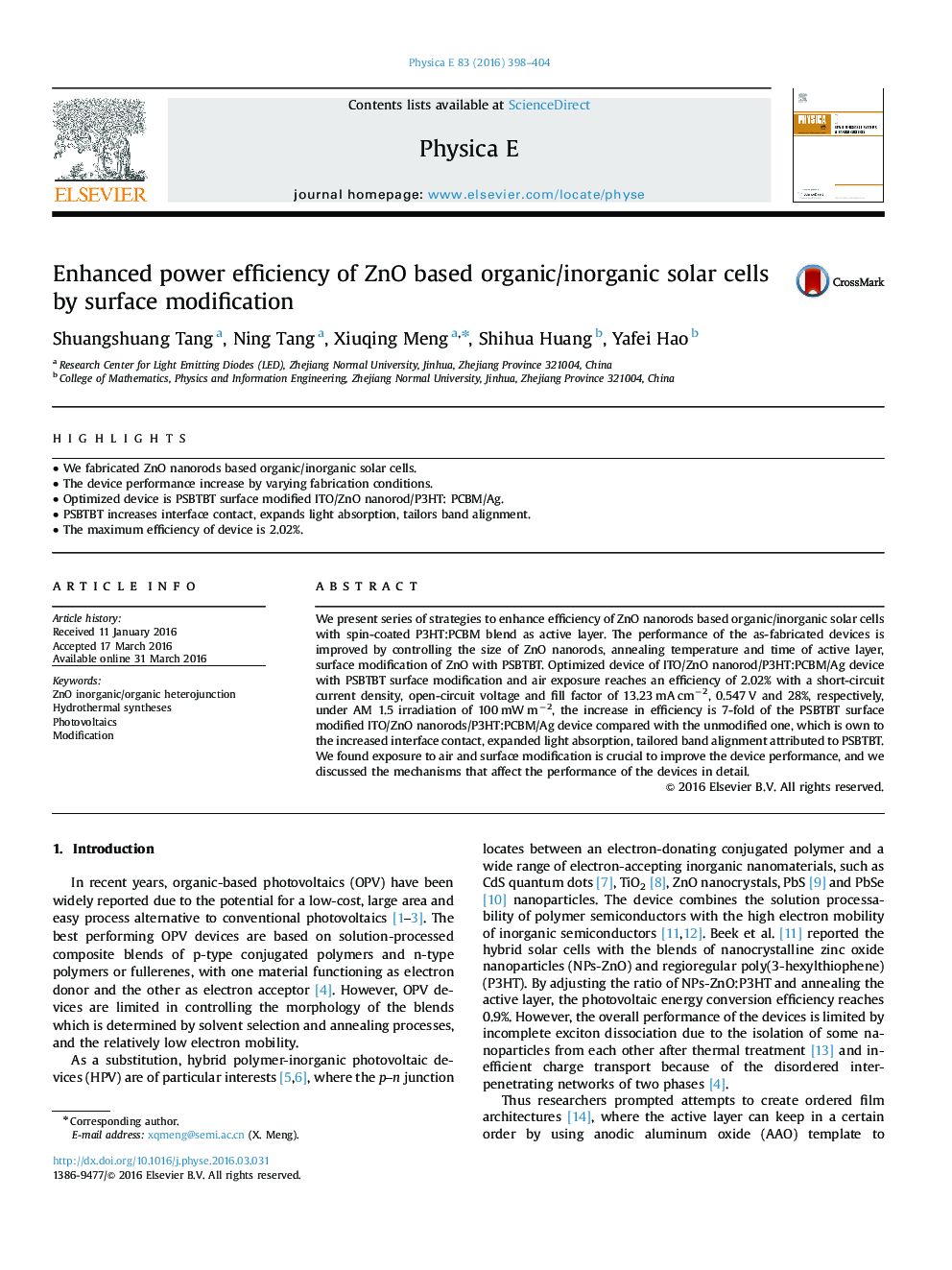| Article ID | Journal | Published Year | Pages | File Type |
|---|---|---|---|---|
| 1543792 | Physica E: Low-dimensional Systems and Nanostructures | 2016 | 7 Pages |
•We fabricated ZnO nanorods based organic/inorganic solar cells.•The device performance increase by varying fabrication conditions.•Optimized device is PSBTBT surface modified ITO/ZnO nanorod/P3HT: PCBM/Ag.•PSBTBT increases interface contact, expands light absorption, tailors band alignment.•The maximum efficiency of device is 2.02%.
We present series of strategies to enhance efficiency of ZnO nanorods based organic/inorganic solar cells with spin-coated P3HT:PCBM blend as active layer. The performance of the as-fabricated devices is improved by controlling the size of ZnO nanorods, annealing temperature and time of active layer, surface modification of ZnO with PSBTBT. Optimized device of ITO/ZnO nanorod/P3HT:PCBM/Ag device with PSBTBT surface modification and air exposure reaches an efficiency of 2.02% with a short-circuit current density, open-circuit voltage and fill factor of 13.23 mA cm−2, 0.547 V and 28%, respectively, under AM 1.5 irradiation of 100 mW m−2, the increase in efficiency is 7-fold of the PSBTBT surface modified ITO/ZnO nanorods/P3HT:PCBM/Ag device compared with the unmodified one, which is own to the increased interface contact, expanded light absorption, tailored band alignment attributed to PSBTBT. We found exposure to air and surface modification is crucial to improve the device performance, and we discussed the mechanisms that affect the performance of the devices in detail.
